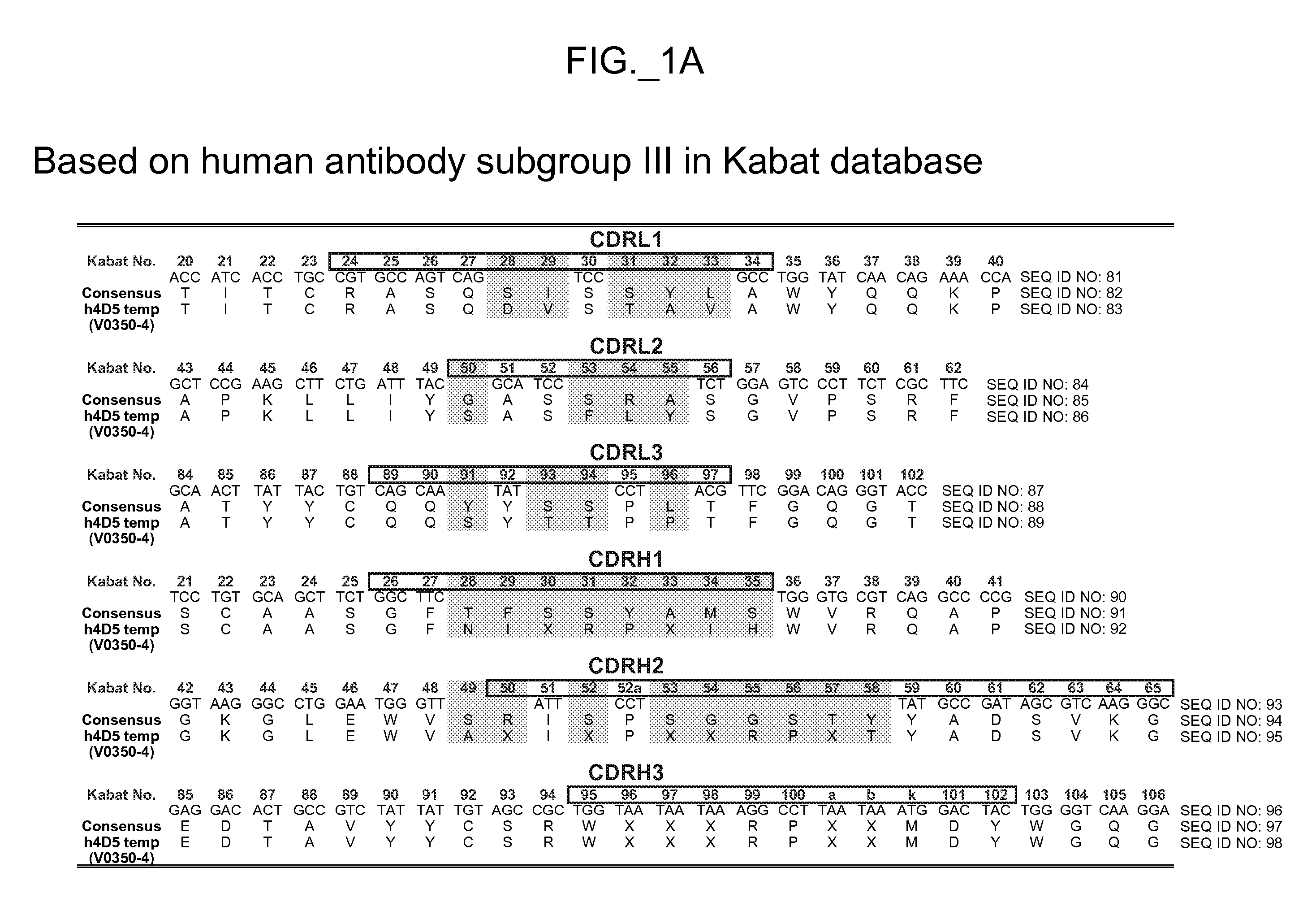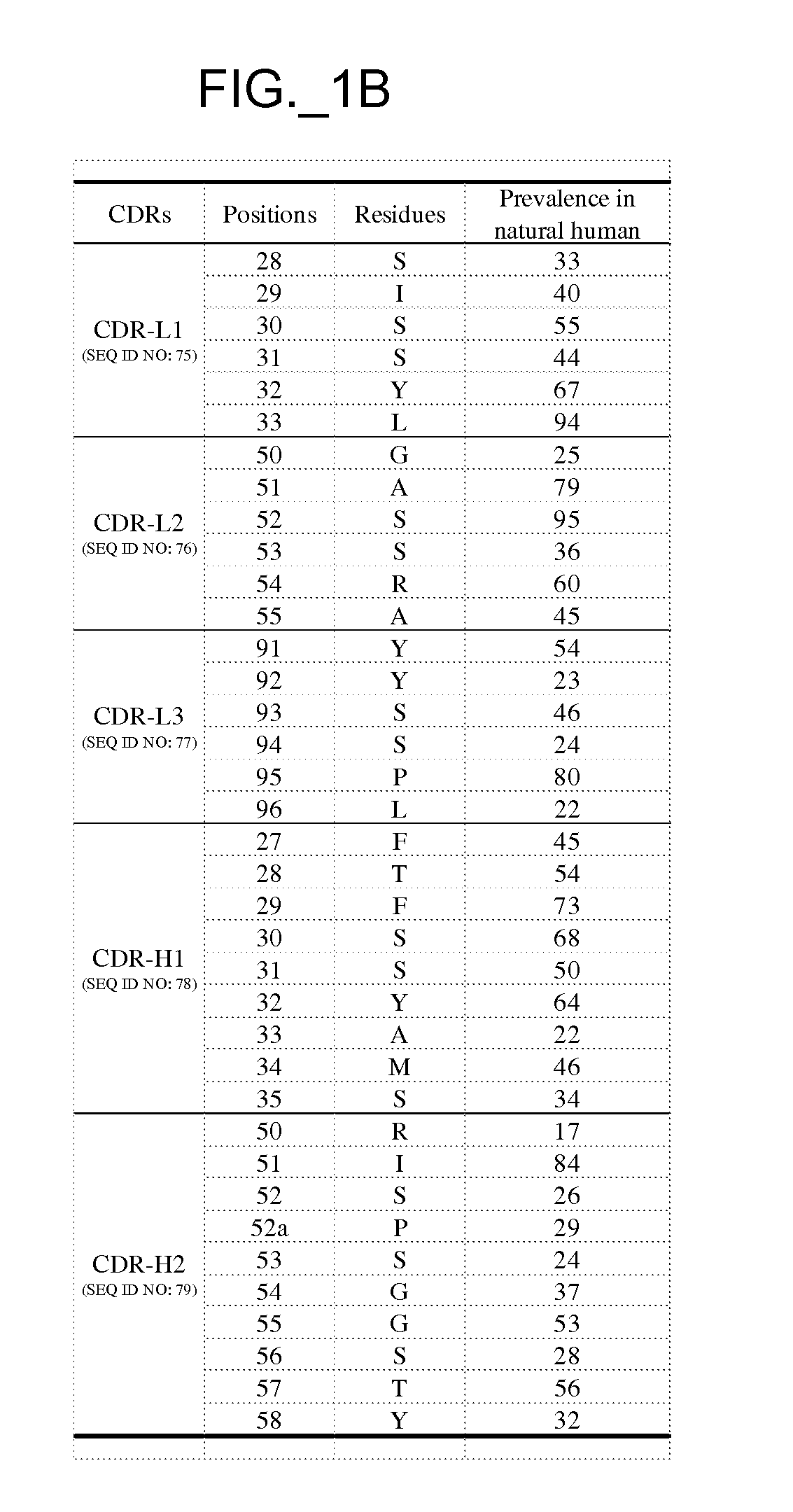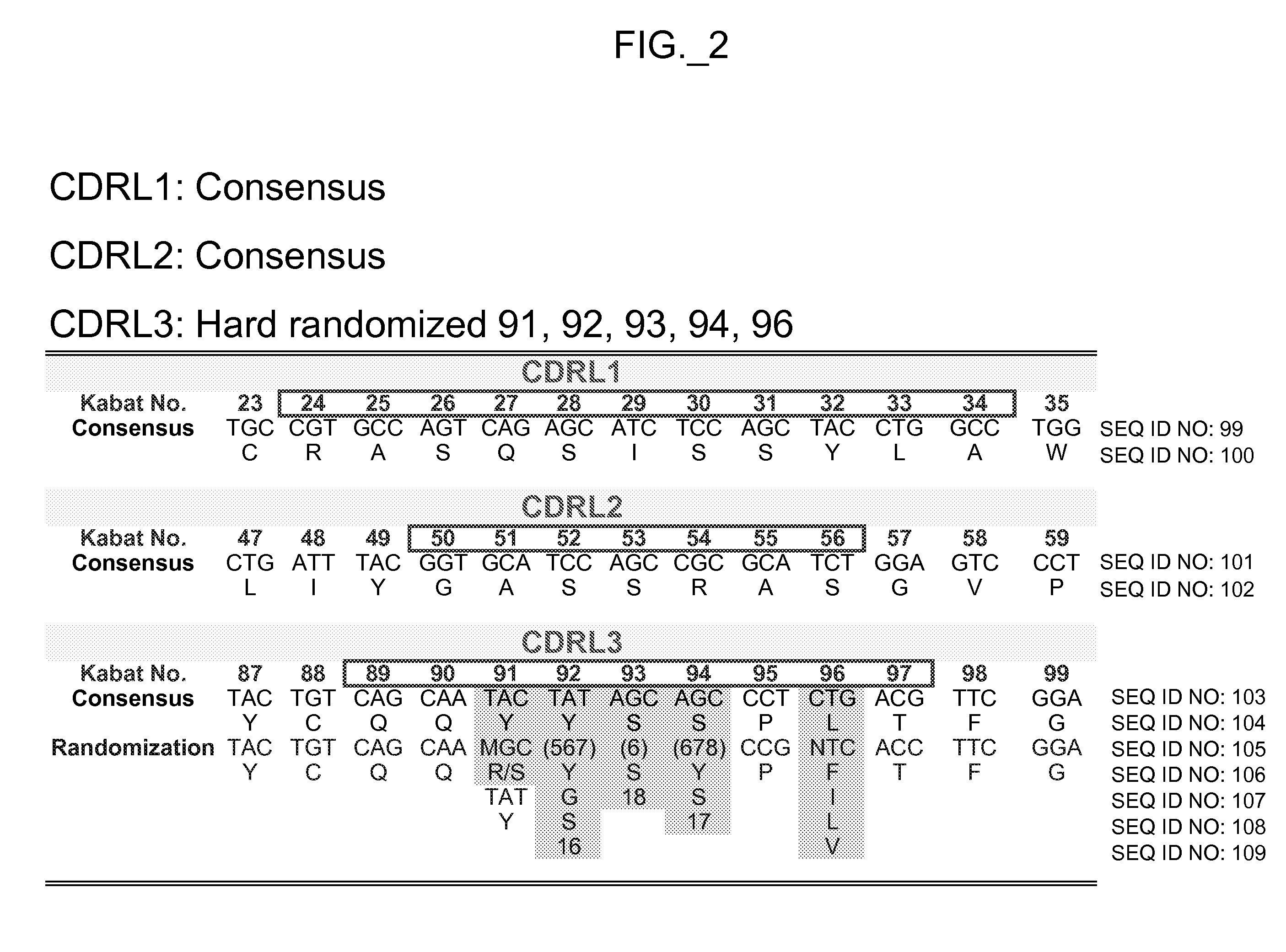Binding polypeptides with diversified and consensus vh/vl hypervariable sequences
a technology of vh/vl and polypeptides, applied in the field of variable hypervariable regions of immunoglobulins, can solve the problems of inability to apply systematic and quantitative methods, inability to diversify and consensus vh/vl hypervariable sequences, and inability to meet the needs of immunoglobulins, etc., to achieve rapid, convenient and flexible application, and increase the likelihood of selecting positions in the hvr
- Summary
- Abstract
- Description
- Claims
- Application Information
AI Technical Summary
Benefits of technology
Problems solved by technology
Method used
Image
Examples
examples
[0522] The performance and quality of any library (e.g., phage displayed library), measured by the affinities and designed function of derived binder members (e.g., antibodies) of the library, is determined in large part by the library sizes, which is in turn limited by the efficiencies of the transformation of the library DNA into Escherichia coli. As a result, it has been observed that art libraries that have been successful sources of binder polypeptides with respect to many target antigens, have nevertheless not been successful for all target antigens despite extensive screening efforts. To address this lack of success, and based in part on new insights into the diversity of human antibodies, and success in reducing codon redundancy and increasing efficiency of mutagenesis, we have designed and engineered a novel and high-quality set of synthetic phage antibody libraries. These libraries, also referred to as VH / VL libraries, can be based on a single template sequence, for exampl...
PUM
| Property | Measurement | Unit |
|---|---|---|
| size | aaaaa | aaaaa |
| pH | aaaaa | aaaaa |
| ionic strength | aaaaa | aaaaa |
Abstract
Description
Claims
Application Information
 Login to View More
Login to View More - R&D
- Intellectual Property
- Life Sciences
- Materials
- Tech Scout
- Unparalleled Data Quality
- Higher Quality Content
- 60% Fewer Hallucinations
Browse by: Latest US Patents, China's latest patents, Technical Efficacy Thesaurus, Application Domain, Technology Topic, Popular Technical Reports.
© 2025 PatSnap. All rights reserved.Legal|Privacy policy|Modern Slavery Act Transparency Statement|Sitemap|About US| Contact US: help@patsnap.com



